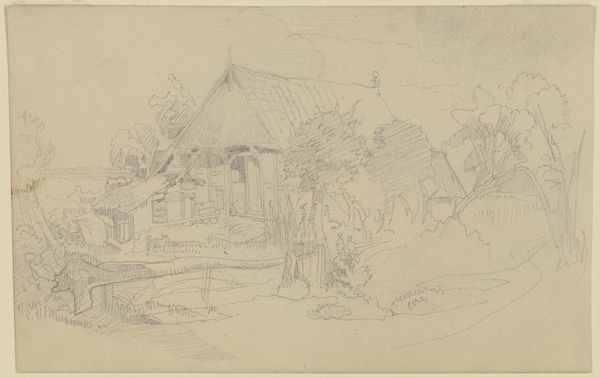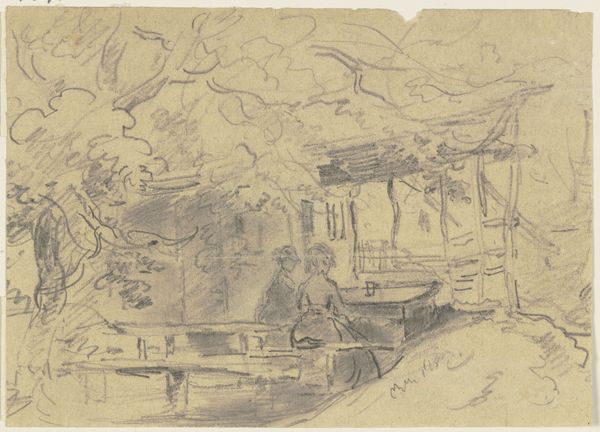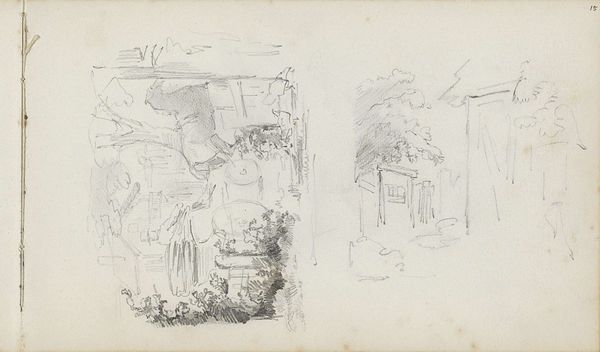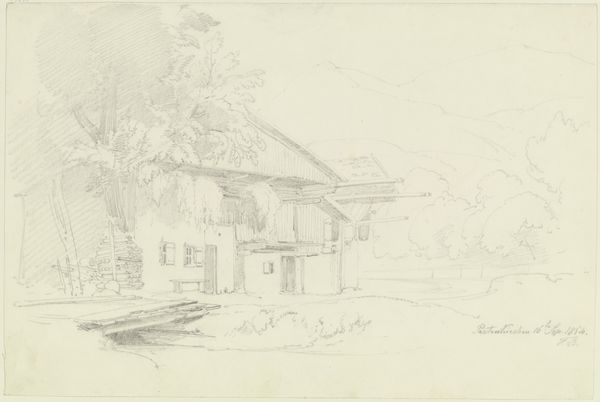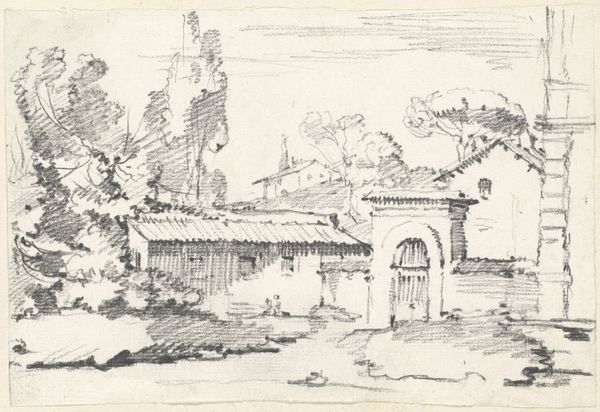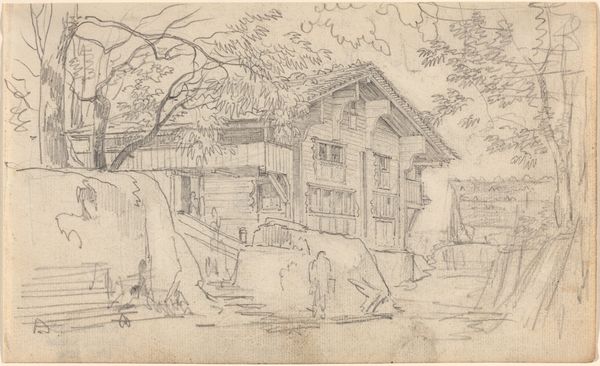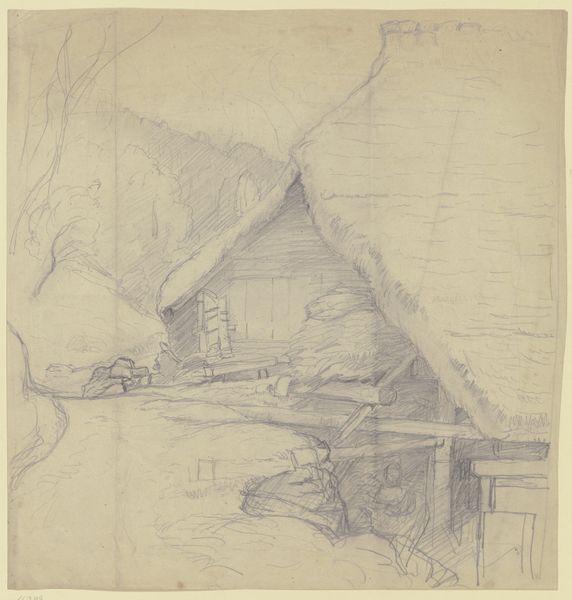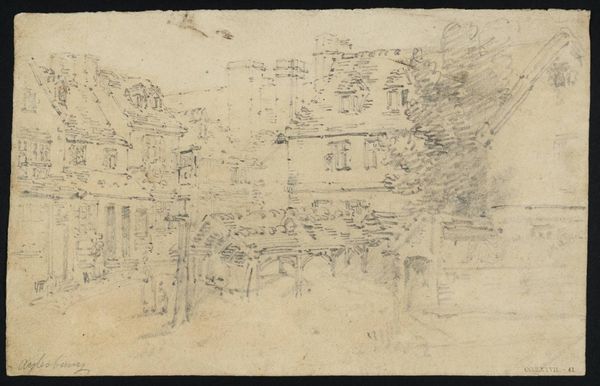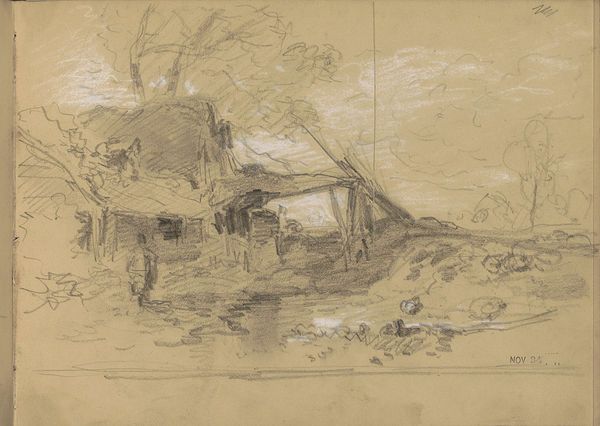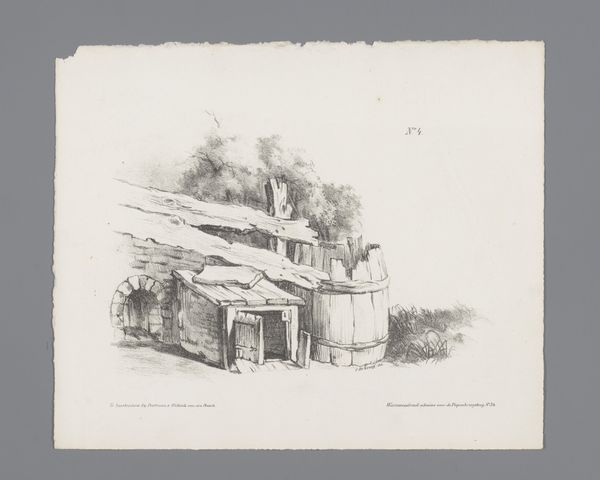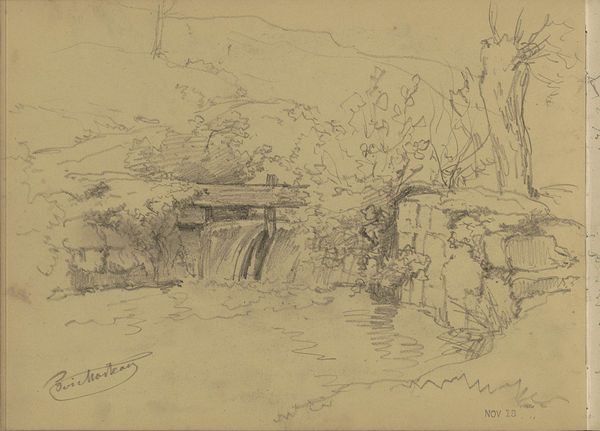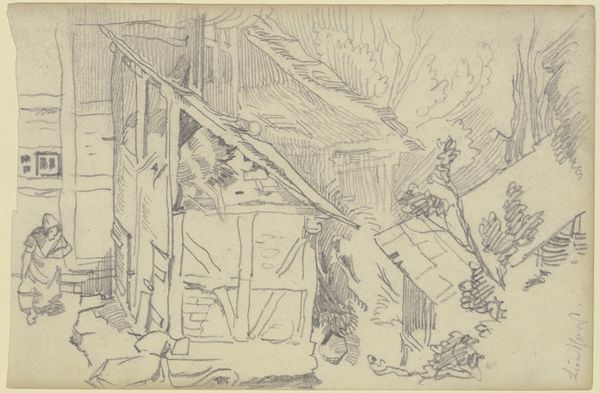
Strohgedecktes Brunnenhaus und Waschtrog neben einer Weinlaube 1817
0:00
0:00
drawing, ink, pencil
#
drawing
#
16_19th-century
#
landscape
#
ink
#
romanticism
#
pencil
#
cityscape
Copyright: Public Domain
Editor: Here we have Carl Philipp Fohr’s "Strohgedecktes Brunnenhaus und Waschtrog neben einer Weinlaube", which translates to "Thatched Well House and Washing Trough next to a Vine Arbor," created in 1817. It’s rendered with pencil and ink, and I find the composition so incredibly detailed, even down to the thatching and the leaves. What jumps out at you about this drawing? Curator: I'm drawn to the materiality of the architecture – the thatched roof, the rough-hewn stone, the implication of physical labor in building and maintaining these structures. The drawing’s attention to such quotidian scenes implies an engagement with rural life, a Romantic era consideration of how objects like well houses and troughs shaped people's lived experiences and their relationship with the land. How does the process of creating this image itself relate to this sense of material reality? Editor: You mean, how does drawing it with ink and pencil create that effect? Well, the artist uses very fine lines to give it detail but also imbue it with texture...like you can almost feel the straw and rough stone. But is that intention or just good technique? Curator: It's likely both. Technique always serves intention. Fohr is representing the labor invested in this space by investing labor in his drawing – a parallel mirroring between the creation of the actual structure and its representation. Consider the act of drawing itself as a form of production, mimicking the physical construction represented within the scene. Is this emphasis a way of valorizing labor? Editor: I see your point! Highlighting the work put into both the structure and the artwork... it gives it new meaning. I never would have seen that! Curator: Exactly. And hopefully understanding the artist's focus can now change how visitors consider it. Editor: Absolutely, it transforms how I understand not only the artwork but the world the artist inhabited and wanted to showcase through his art. Thank you!
Comments
No comments
Be the first to comment and join the conversation on the ultimate creative platform.
